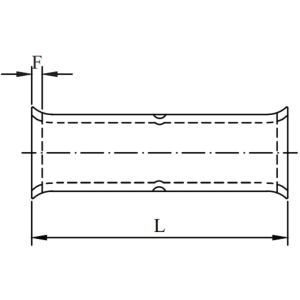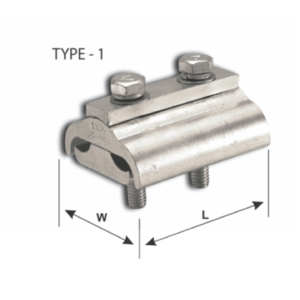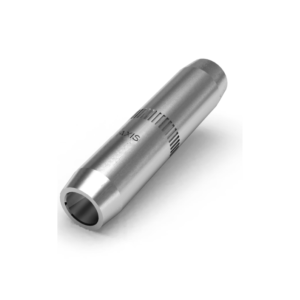Description
Bimetallic Lugs are designed to join two different types of metals, typically aluminium and copper, in electrical installations. These lugs are used to establish a secure connection between cables and electrical equipment, such as circuit breakers, transformers, or switchgear.
The use of bimetallic lugs is essential due to the incompatibility of aluminium and copper when they are in direct contact. When these metals come into contact, a galvanic corrosion process occurs due to the potential difference in the metals. This corrosion can lead to increased electrical resistance, causing overheating, potential equipment failure, and even fire hazards.
To avoid these problems, Axis Bimetallic Lugs are made with two distinct sections:
- Aluminium Barrel: The aluminium barrel is designed to connect to the aluminium conductor. Aluminium is lightweight, highly conductive, and more affordable compared to copper, which is why it’s widely used in power transmission lines and electrical installations.
- Copper Palm: The copper palm is designed to connect to the copper conductor or equipment terminal. Copper has excellent electrical conductivity, mechanical strength, and corrosion resistance, making it an ideal choice for electrical connections.
The two sections are joined together using a friction welding process, which creates a strong bond between the two metals without introducing any additional materials that could compromise the electrical or mechanical properties of the connection.
Applications of Bimetallic Lugs
-
- Electrical power distribution: Bimetallic lugs are used in power transmission and distribution systems to connect aluminium conductors to copper equipment terminals in substations, transformers, and switchgear. They ensure reliable and efficient energy transfer between different components of the electrical grid.
- Solar photovoltaic (PV) systems: Bimetallic lugs are utilized in combiner boxes of solar installations, where they connect aluminum conductors from multiple solar panels to copper equipment terminals or busbars. This helps to consolidate the output from the solar panels into a single electrical output that is then connected to the inverter. By using bimetallic lugs in combiner boxes, the risk of galvanic corrosion, increased electrical resistance, and overheating is minimized, ensuring the safe and efficient operation of the solar PV system.
- Industrial electrical installations: In manufacturing plants, factories, and other industrial facilities, bimetallic lugs connect aluminium cables to copper busbars or terminal blocks, ensuring proper electrical connections for machines and control systems.
- Commercial buildings: Bimetallic lugs are employed in commercial buildings such as offices, shopping centres, and hotels to connect aluminium conductors in the main electrical panels to copper branch circuits or equipment terminals.
- Residential electrical systems: In residential buildings, bimetallic lugs can be used to connect aluminium service entrance conductors to copper terminals in the main distribution panel, ensuring a secure and safe connection between different parts of the home electrical system.
- Renewable energy systems: In solar or wind energy installations, bimetallic lugs are often used to connect aluminium conductors from the power generation equipment to copper conductors in inverters, transformers, or other system components.
- Electric vehicle charging stations: Bimetallic lugs can be used in electric vehicle charging stations to connect aluminium conductors in charging cables to copper equipment terminals or busbars, ensuring proper electrical connections for efficient and safe charging.
- Telecommunications: In telecommunications infrastructure, bimetallic lugs can be used to connect aluminium grounding conductors to copper grounding bars or equipment terminals, ensuring proper grounding and reducing interference.
It is crucial to select the appropriate type and size of bimetallic lug for each specific application, considering factors such as conductor size, insulation type, temperature rating, and environmental conditions. Proper installation and maintenance practices are also essential to ensure the safe and reliable operation of electrical systems using bimetallic lugs.









